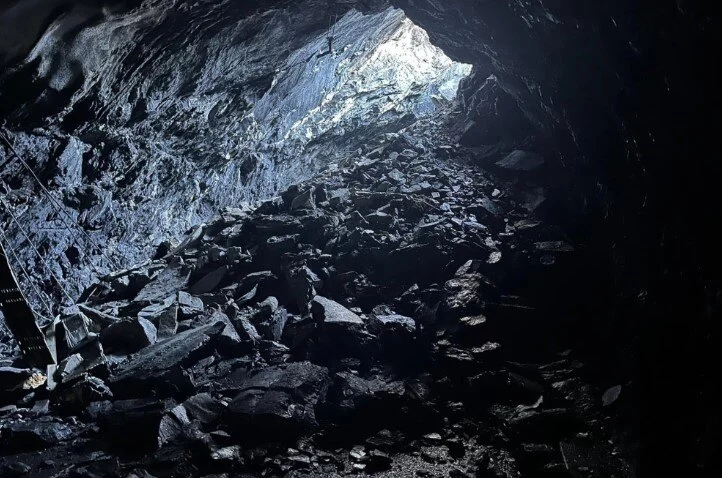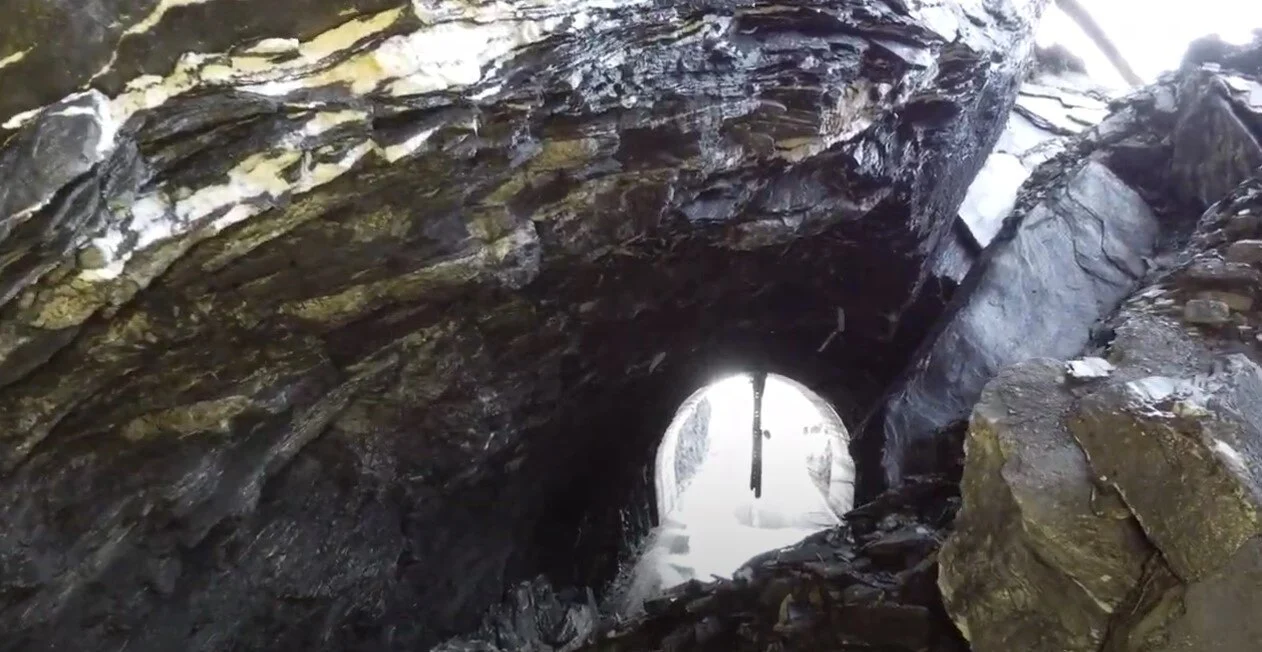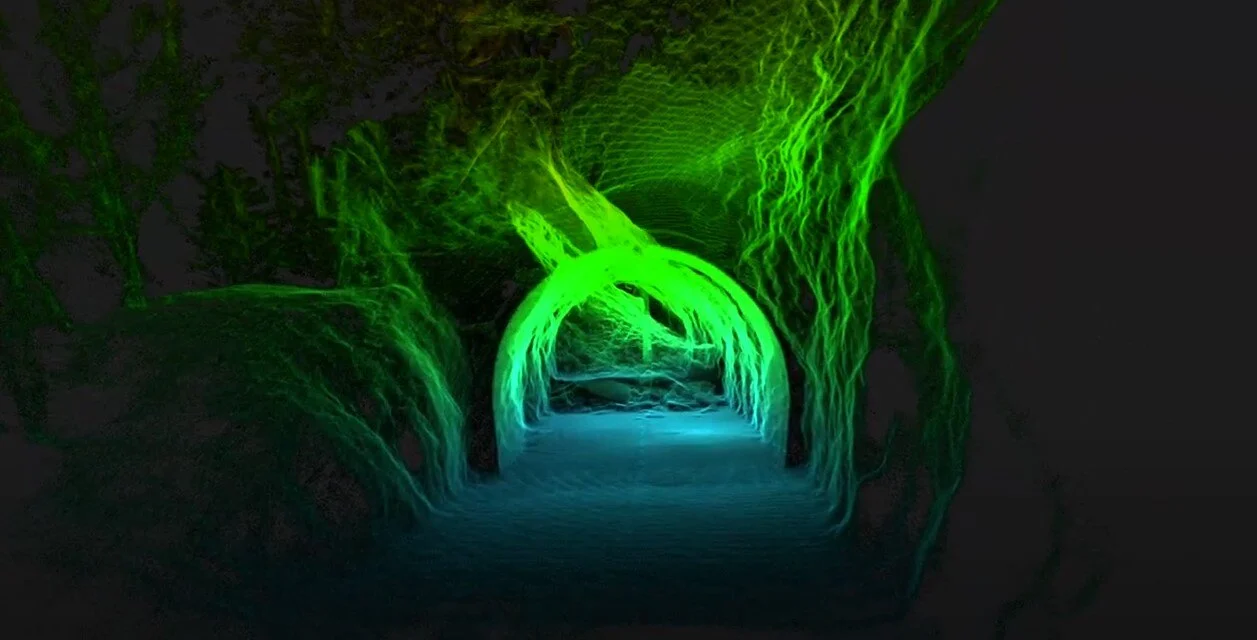Investigating a collapsed tunnel after a landslide in the Swiss Alps
Investigating a Collapsed Tunnel After a Landslide in the Swiss Alps
A major landslide struck a road tunnel in the Swiss Alps, cutting off access to a village and disrupting a popular ski resort. The Elios 3 drone played a crucial role in assessing the damage and helping authorities plan a safe response to the incident.
Key Benefits at a Glance
|
Safety The unstable condition of the tunnel made it too dangerous for human entry, so local authorities used the Elios 3 to gain real-time situational awareness without risking lives. |
Efficiency The Elios 3 was deployed quickly and captured both LiDAR and visual data simultaneously, allowing for fast and accurate analysis of the collapsed tunnel. |
|
Analysis LiDAR scans from the Elios 3 provided detailed point cloud data, enabling a clear visualization of the tunnel’s interior and the path of the landslide. |
Speed The quick deployment of the drone allowed for early planning, and the tunnel was reopened by June of the same year, minimizing disruption during the busy summer season. |
Landslides are common worldwide, often triggered by natural factors like mountain shape, or exacerbated by human activities such as deforestation, construction, and climate change. In Switzerland, landslides tend to increase in early spring due to fluctuating weather conditions that weaken the ground.
A Landslide in the Swiss Alps
On the night of February 3rd, 2024, multiple landslides hit the valley around Riddes, Switzerland. One tunnel between Riddes and La Tzoumaz partially collapsed, cutting off access to nearby villages and a ski resort. Every day the tunnel remained closed meant longer detours for residents and tourists, making it critical to assess the damage quickly.
 The interior of the tunnel was covered in debris. Image credit: Canton Valais
The interior of the tunnel was covered in debris. Image credit: Canton Valais
Access to the tunnel was extremely dangerous, but getting timely information was essential to plan repairs and understand the cause of the collapse. Local authorities turned to innovative tools to gather data remotely and safely.
Planning a Landslide Investigation with Drones
The landslide occurred in the canton of Valais, and local authorities needed to determine its cause and the extent of the tunnel damage. A full investigation would help improve future landslide predictions and mitigation strategies.
Due to the instability of the site, physical entry into the tunnel was not an option. So, the Valais authorities used the Elios 3 drone equipped with a Surveying Payload to collect photos, videos, and LiDAR data, providing a complete view of the situation inside the tunnel.
This project was handled by the Department de la Mobilité du Territoire et de l’Environnement, as the infrastructure is owned by the Valais canton, with no external involvement in the initial investigation.
Flying a Drone in a Collapsed Tunnel
The tunnel had been in use for decades, and its design may have contributed to the collapse. An opening in the outer wall allowed natural light to enter, which was likely not part of the original structural design. This opening may have weakened the tunnel's integrity over time.
Within 24 hours of the incident, the drone pilot from the Valais authorities began planning the mission. The area around the window became the main focus of the investigation. Multiple flights were conducted using the Elios 3 to gather detailed data about the structure and the damage caused by the landslide.

The visual feed from the Elios 3 showed how the landslide had caused the tunnel roof to collapse.
The first flights focused on mapping the layout of the debris, assessing the tunnel damage, and gathering general situational data to plan the clearance. LiDAR surveys were key in this phase. Subsequent flights focused on analyzing the window and its potential role in weakening the tunnel structure.
Findings from Drone Surveys in the Collapsed Tunnel
The images captured by the Elios 3 revealed the long-term effects of the tunnel’s design. When it was built in the 1960s, the open window allowed cold air to circulate, accelerating freeze-thaw weathering. Over time, this weakened the surrounding rock, leading to cracks and structural issues.
It is also believed that explosives were used during the tunnel’s excavation, which could have caused internal stress and further weakened the outer walls. These factors, combined with years of vibration and seismic activity, eventually led to the collapse.

Clear visualization: the LiDAR scan clearly shows the layout of the collapsed tunnel section and where the rocks came through.
By 2023, signs of instability were already present. Small rockfalls occurred in late December, reducing the thickness of the rock pillar separating the tunnel from the surface. This created a weaker structural support, increasing the risk of a major collapse.
The Impact of Drones in Emergency Response
Without the Elios 3, it would have been nearly impossible to access the tunnel safely. Sending people inside was too risky, so teams would have had to secure the area first, delaying recovery efforts. Using drones allowed investigators to act quickly, saving time and resources.
The fly-through of the LiDAR scan shows the full extent of the damage.
The use of the Elios 3 was a game-changer in this case. It allowed investigators to assess the tunnel just one day after the incident, something that would have taken days or even weeks in the past. The remote access saved time, reduced team size, and ensured the safety of all involved.
By leveraging advanced technology, the Valais authorities were able to gather critical data quickly and safely. The findings will be used not only for repairing this tunnel but also for improving future landslide monitoring and response strategies. As climate change increases the likelihood of unpredictable geological events, such innovations are becoming more vital than ever.
Shandong Rizhaoxin Metal Products Co., Ltd. , https://www.cysteelcoil.com